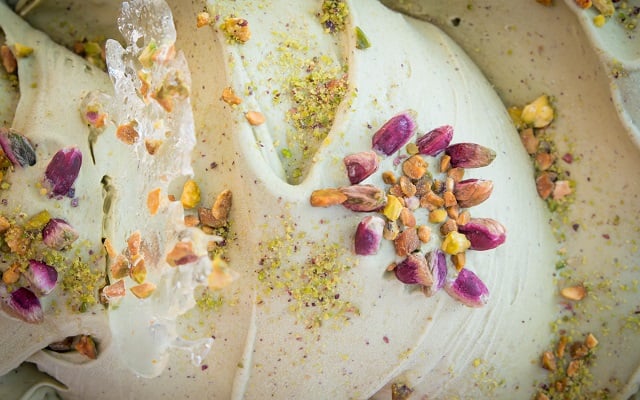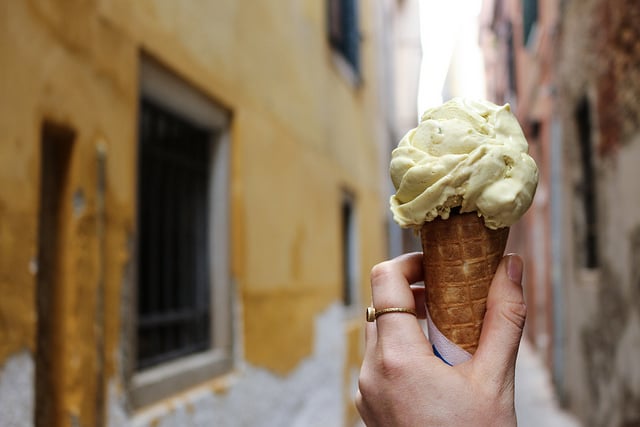The Gelato World Tour is coordinated by the Carpigiani Gelato University, also known as Bologna's ice cream university, and is supported by the Italian Foreign Ministry as it tours the world each year to track down the tastiest gelato on the planet.
Judges have toured the world during a three-year selection process with over 1,800 gelato-makers taking part. The 36 finalists representing 19 countries competed in the Grand Finals in Rimini this weekend, with a number of challenges ranging from dairy-free ice cream to speedy gelato-making.
But it turned out that the very best cone can be found in Italy, with the Gelateria Crispini in Spoleto scooping the top prize.
- Italian gelateria debuts ice cream for dogs
- US tourists outraged over €42 ice cream bill in Rome
- INTERVIEW: 'A gelato artist is an emotion-maker'
 – Italy_04-DSC_3149.jpg)
Alessandro Crispini poses with his prize-winning gelato. Photo: Dino Buffagni/Gelato World Tour
Gelataio Alessandro Crispini's pistacchio flavour, made of three kinds of Sicilian pistacchio roasted for 24 hours, was crowned the World's Best Gelato.
The winners were selected by a 45-strong jury including gelato experts, chefs, and journalists.
In second place was the German Eiscafé De Rocco in Schwabach with a grape sorbet created by a father and son in a tribute to their hometown of Venice. And a chocolate-passion fruit gelato from Amor-acuyà in Medellín, Colombia was awarded third place.
A total of 50,000 visitors came to the finals to watch the competition and enjoy the 2,500kg of gelato which was produced over the three-day fair.
And according to organizers, 2017 has been a record year for gelato-eaters as well as makers, with consumption of the dessert up ten percent on last year.
READ ALSO: How to spot good quality gelato in Italy – and how to suss out the fakes
Photo: Alexandra E Rust/Flickr





 Please whitelist us to continue reading.
Please whitelist us to continue reading.